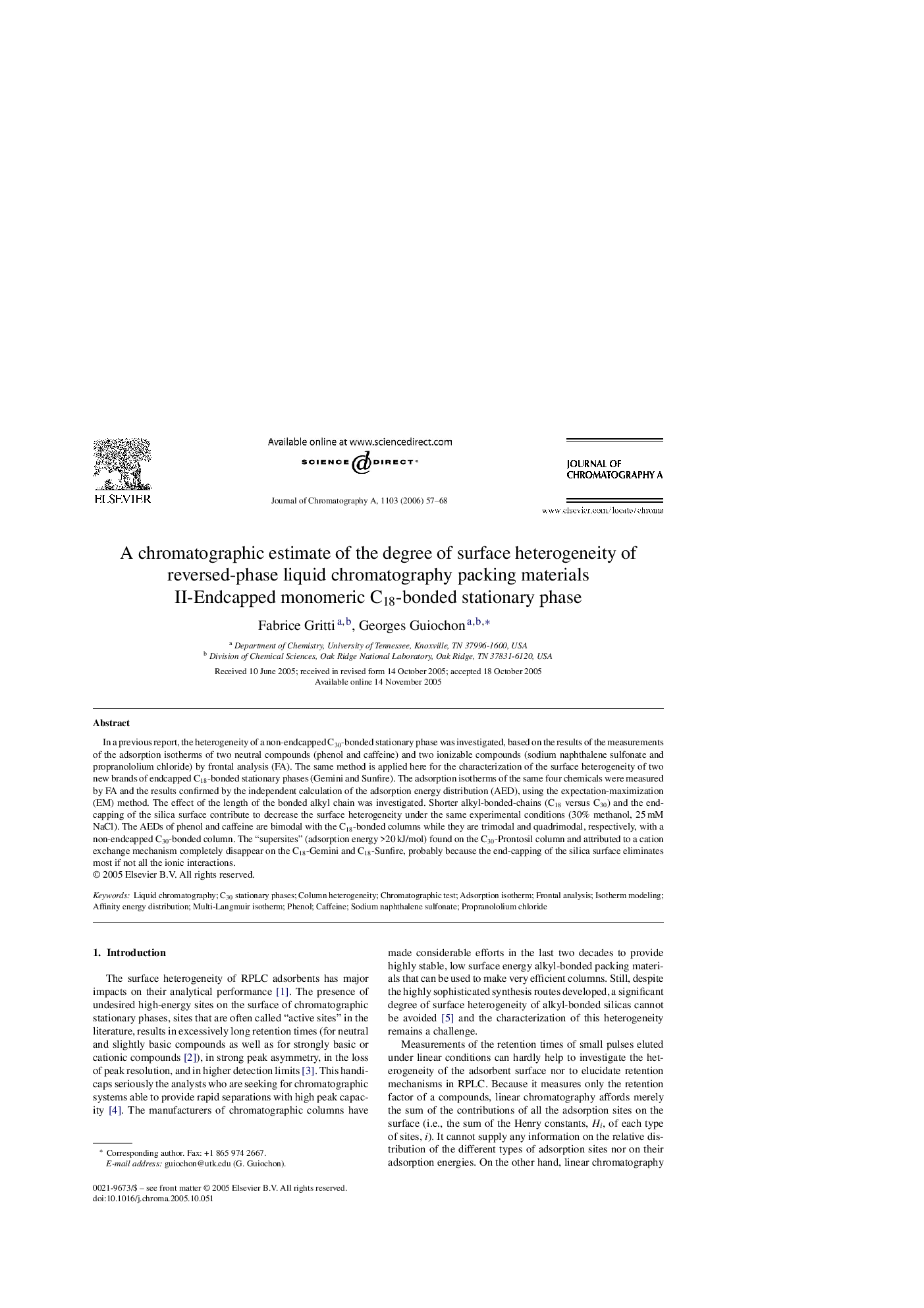| Article ID | Journal | Published Year | Pages | File Type |
|---|---|---|---|---|
| 1210446 | Journal of Chromatography A | 2006 | 12 Pages |
In a previous report, the heterogeneity of a non-endcapped C30-bonded stationary phase was investigated, based on the results of the measurements of the adsorption isotherms of two neutral compounds (phenol and caffeine) and two ionizable compounds (sodium naphthalene sulfonate and propranololium chloride) by frontal analysis (FA). The same method is applied here for the characterization of the surface heterogeneity of two new brands of endcapped C18-bonded stationary phases (Gemini and Sunfire). The adsorption isotherms of the same four chemicals were measured by FA and the results confirmed by the independent calculation of the adsorption energy distribution (AED), using the expectation-maximization (EM) method. The effect of the length of the bonded alkyl chain was investigated. Shorter alkyl-bonded-chains (C18 versus C30) and the end-capping of the silica surface contribute to decrease the surface heterogeneity under the same experimental conditions (30% methanol, 25 mM NaCl). The AEDs of phenol and caffeine are bimodal with the C18-bonded columns while they are trimodal and quadrimodal, respectively, with a non-endcapped C30-bonded column. The “supersites” (adsorption energy >20 kJ/mol) found on the C30-Prontosil column and attributed to a cation exchange mechanism completely disappear on the C18-Gemini and C18-Sunfire, probably because the end-capping of the silica surface eliminates most if not all the ionic interactions.
